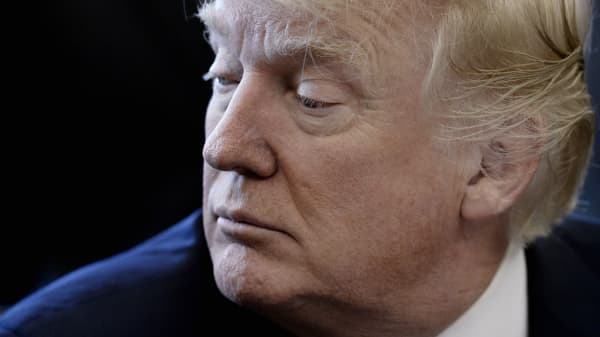President Trump on Tuesday signed an Executive Order aimed at dismantling President Obama's climate legacy. The order directs agencies to rewrite regulation restricting carbon emissions in the power sector, lift the moratorium on coal leasing on federal lands, reverse rules limiting methane leaks, and revise the way the government calculates the cost of climate change, among other changes.
The move is regrettable for the environment and the health of Americans across the country. But it is not surprising, given Trump's commitment to an "America First" energy plan, which focuses on lowering energy costs, boosting domestic production, and "freeing us from dependence on foreign oil."
Unleashing the power of markets can be effective. Large, flexible and well-functioning energy markets are able to respond more quickly and achieve policy aims at lower cost and with great ingenuity, as policymakers are often unable to anticipate new technologies, consumer preferences and behaviors, or unintended consequences.
This view is one-sided, however. The president and policymakers in Washington must consider the environment as well—and identify clearly and precisely cases in which markets fail. For example, markets alone do not curb pollution. The costs of pollution in terms of public health or the environment are not internalized by, say, the power plant, and thus not passed on to electricity consumers.
This means, absent regulation, consumers and businesses will emit too much pollution, risking the health and safety of our citizens and environment, not to mention reversing course on global action to fight climate change. Such market failures are abundant. Relative to the social benefits, private firms underinvest in energy system resilience, energy security, and in R&D as they cannot capture the full social value of innovation.
Although coal is unlikely to enjoy a resurgence even without the Clean Power Plan—cheap natural gas, falling renewable energy costs, and weak Asian coal demand have been the primary drivers of coal's decline—the fact is that without a policy to address the social costs of carbon emissions, power plants will emit too much greenhouse gases.
According to the U.S. Energy Information Administration, coal's share in the electricity mix will hold steady at around 30 percent absent the Clean Power Plan, while it would decline to a little over 20 percent in 2030 with the Clean Power Plan in place. While coal retirements will continue even absent the Clean Power Plan, this policy shift matters.
The Clean Power Plan, to be sure, is not the only way to address climate change. But policymakers skeptical of such a regulatory approach should be working to find better solutions. Market-based instruments, for example, have long been touted by many economists as a more cost-effective way to address environmental issues than command-and-control regulation.
From Reagan's EPA pioneering cap-and-trade system to phase out leaded gasoline to President George H.W. Bush's proposed use of cap-and-trade to curb sulfur-dioxide emissions and acid raid, Republicans have long embraced market-based approaches.
Adopting market-based approaches, however, requires an understanding of the costs of climate change in order to craft policies with benefits that exceed costs. That is why the arcane metric known as the "social cost of carbon" is highly consequential for setting rules for everything from fuel economy to power plants to appliance efficiency.
The Trump Administration has signaled that it believes the cost is much lower than the cost recognized under Obama, owing to such technical issues as how to value the future damage from climate change in today's dollars, and only counting harm to the United States in the calculation, instead of considering harm across the world.
Because climate change is a uniquely global problem—with one ton of CO2 anywhere contributing equally—policy would dramatically underestimate the costs of climate change if every nation looked only at its domestic damages.
Although U.S. carbon dioxide emissions have declined 14 percent over the last decade, and the cost of renewable energy has fallen by two-thirds for wind and by 85 percent for utility-scale solar since 2009, market forces alone will not accelerate the shift to a lower carbon system by anywhere close to enough to avoid the worst impacts of climate change. For that, stronger government policy is needed.
Policymakers on both sides of the aisle may reasonably have different views on how best to address climate change. But a faith in unfettered market forces alone is not an option.
Commentary by Jason Bordoff, a professor of professional practice in international and public affairs and the founding director of the Center on Global Energy Policy at Columbia University's School of International and Public Affairs. He was previously senior director on the staff of the National Security Council and special assistant to President Obama. Follow him on Twitter @JasonBordoff.



